Kriegsmarine Steel Helmet M35 (Camouflage version)
CATEGORY: Version
SKU: 21.GOR.01.02.01.001.002
Estimated market value:
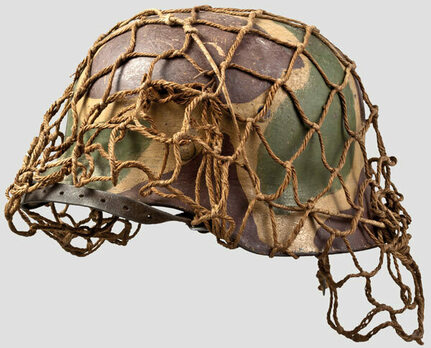
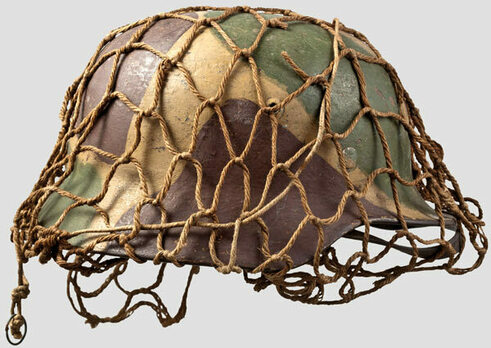
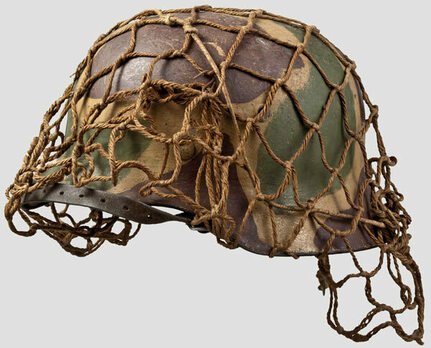
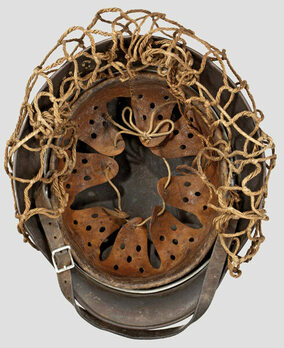
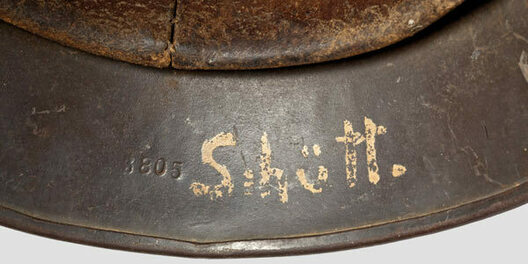
Estimated market value:
The headgear and uniforms worn by members of the Kriegsmarine were based upon the designs utilized by the Kaiserliche Marine and the Reichsmarine. The official regulations governing the uniforms of the Reichsmarine were issued on April 5, 1921, and they were embraced, with a few alterations, as the Kriegsmarine uniforms in 1935. New guidelines concerning rank insignia were issued in 1936.
There are three main models of steel helmets that were worn in the German military during the Third Reich, the M-35, the M-40, and the M-42. All of these helmet models are composed of several main elements, including the shell, the liner, the air vents/grommets, the chinstrap, the paint, and the insignia/decals. Each iteration of the steel helmet was launched in an effort to reduce the time and cost associated with helmet manufacture.
To start, in 1931, the first efforts to design a new steel helmet for the German military began, and they resulted in the prototype M-31 liner. The M-31 is more shock resistant than the liners employed in First World War helmets. A new style of chinstrap was also created, but an associated helmet was never produced for widespread wear.
The M-35 helmets were introduced in 1935, and they were designed to be lighter, smaller, and easier to manufacture than the First World War helmets. These steel helmets were meant to facilitate easier wear and use during mobile warfare. The M-35 helmet has reinforced washer rings around the air vents, a rolled rim, and uses the M-31 liner.
In 1940, the M-40 helmet was released, and it differs from the M-35 in the design of the air vents. The M-35 helmets have air vents with washer rings that were added as a separate attribute to the shell, while the M-40 helmets have air vents that were pressed or stamped on the metal during the production of the shell. Both the M-35 and the M-40 helmets feature a rolled rim, and use the M-31 liner.
Two years later, in 1942, the M-42 helmet was introduced. The main difference between the M-40 and the M-42 helmets is that the rim of the M-42 is not rolled, but it flares outwards. Also, in early 1944, the liner of the M-42 helmets was changed to the M-44 Simplified Liner Unit. The M-44 liner differed from the M-31 in that it omitted and reduced several elements, such as the leather liner scallops and outer ring, to save on material costs.
All steel helmets came in set shell and liner sizes. The helmet shells were mass-produced in five sizes, including 60, 62, 64, 66, and 68, and their respective liner sizes were 52-53, 54-55, 56-57, 58-59, and 60-61. The shell sizes were often stamped on the inside of the helmet itself, frequently on the back of the helmet near the neck-guard.
While each military branch wore the same standard helmet models, they featured unique decals on the sides of the helmet to differentiate between branches; the decals were located beneath the air vents. Prior to 1940, the steel helmets feature double decals, with the national tricolour shield on the right side and the branch of service decal on the left side. Double decals may be present on M-35 helmets, but the tricolour shield was removed from the production process when the M-40 helmets were introduced; it made the wearers too much of a target.
The Kriegsmarine version of the M-35 helmet always features a gold-coloured Wehrmacht eagle within a black shield on the left side. There are also rare examples with double decals that have the gold-coloured Wehrmacht eagle on the left side, and the national tricolour shield on the right side.
The M-35 helmet paint finish went through several iterations due to its transition from inactive to active war use. Initially, the M-35 helmet featured matte grey paint finish, but in 1940 it was changed in quick succession from matte field grey finish, to matte slate grey, and then the slate grey finish was roughened. The steel helmets could also be covered in dirt, mud, white or camouflage paint, or additional camouflage elements, such as barbed wire, leafs, and canvas, to blend in with the wearer’s surrounding terrain.
The M-35 helmet was unique in that it was also manufactured in half sizes, Z61, Z3, Z65, and Z67.

Comments
Sign in to comment and reply.


Scroll Top